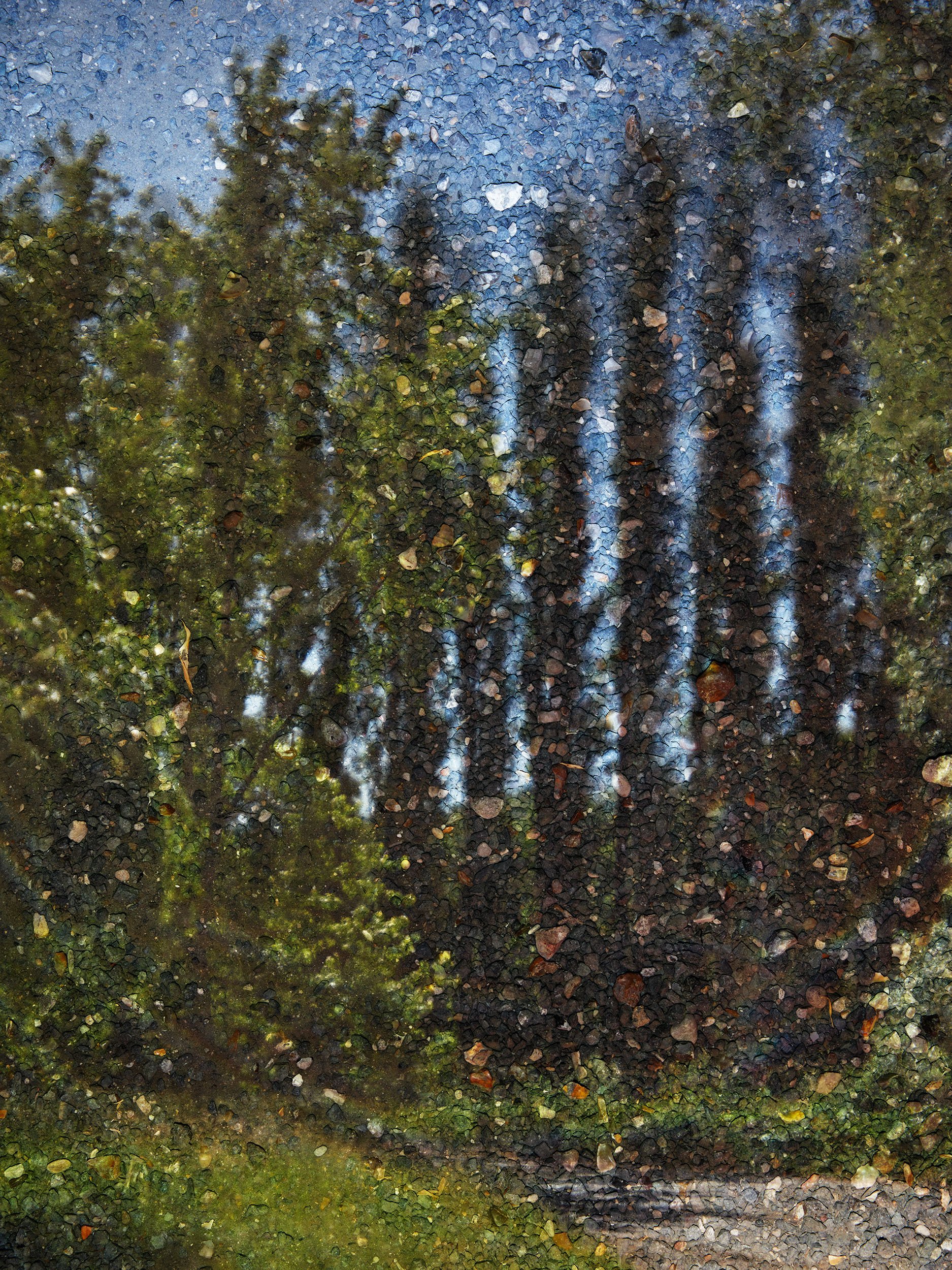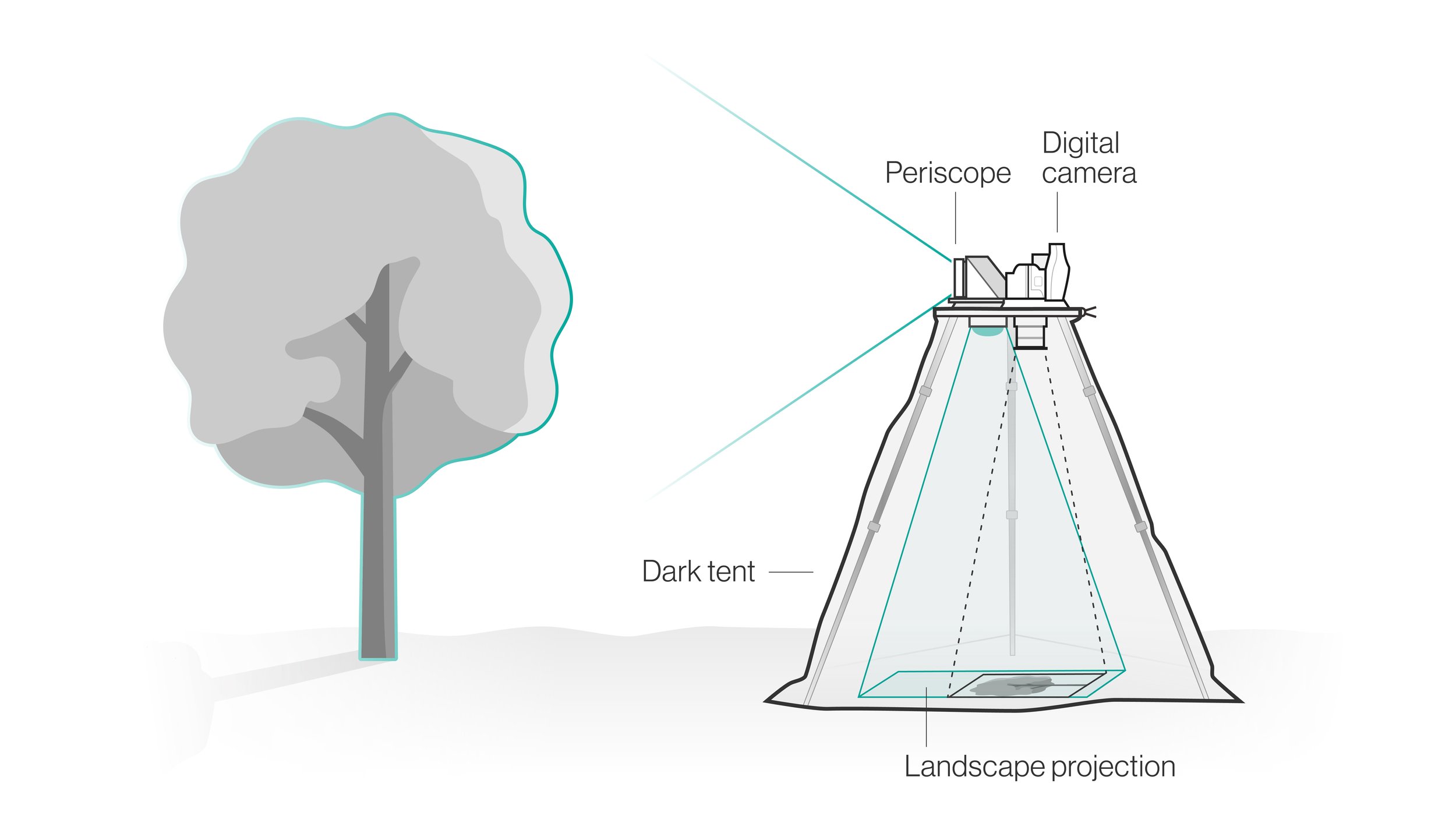Pictures on the Ground: In the Terrain of Van Gogh
In June 2022, I went to Arles, Saint- Remy and other places in the south of France to make pictures where van Gogh painted. In locating myself within his landscape, I hoped that my pictures would contain, and be touched by, some of the spirit and light in his paintings. Clearly, I did not produce any new "van Goghs," which is a good thing because I didn’t want to make copies!
Happily, what I came up with was my own take on the light and land in Provence and yet, I think, my landscapes, as different as they may be from the painter's, still evoke something of his vision. I also believe that some of the images I made suggest the look and atmospheres captured by other 19th century French landscape painters who influenced van Gogh.
The patina and strangeness of the surface that appear in my images are products of a photographic tool I call Tent/Camera. I designed this device to allow me, in a periscope-like fashion, to project views of a nearby landscape directly onto the very ground where the tent sits. My camera, on top of the tent, captures a 'visual sandwich' comprised of the scenery and the details of the ground all at once, in one picture. And it is in this real/surreal melding of optics, photography and art history where my pictures dwell, creating a middle world - where both the expansive and the particular can reside at the same time.
In June 2023, in order to pursue my project further, I went to the north of France to Auvers where van Gogh made his final paintings.
TENT/CAMERA Technical Notes
My Tent/Camera is made of a simple light-proof material that wraps around a large adapted tripod that has a plate on top which holds two devices:
1: A 90-degree prism with a lens attached (diopter) This prism acts like a periscope projecting an image of the nearby landscape on the ground below. The focus of the projected image can be adjusted by raising or lowering the height of the tent-Technically this has the effect of changing the focal length of my lens attached to the prism. This makes it possible to achieve discrete focused areas of the image.
2: Next to the prism on top is a digital camera looking straight down and focused on the ground. A picture made this way shows, both the granular details of the ground -stones, grass, dirt cement, etc. plus an added projected vista of the landscape giving the overall result an illusion of a painterly patina that I like. The camera is connected to a laptop computer outside the tent which allows me to compose, see and focus an image with precision.
While I know that technical explanations alone do not fully convey my deeper artistic reasons for exploring reality this way, I think that it is important to outline clearly how this device works and, in a sense, express what I am after. The evolution of photographic technology, since its invention in 1839, has always been tied to the artistic vision and ambition of its practitioners. My aim in this work is to ground myself in new realities.
On the recent trip to the north of France in June 2023 my assistant, Max LaBelle and I experimented to find new ways to use our device. At times we got very close to some things in the landscape such as flowers in Monet’s garden which lets us render them very out of focus (almost like abstract explosions) against the more focused background where plants are more readable further in the garden. In every one of these pictures there is always the presence of a tightly focused ground under the tent with its pebbles, grass. stony paths, dirt and multiple other things. It is this sort of visual polyphony that excites me,
My pictures show what was there in front and under me. Nothing that was not there has been added. I do believe that the reality of the world seen through various lenses and temperaments surpasses anything that I might want to invent.






























